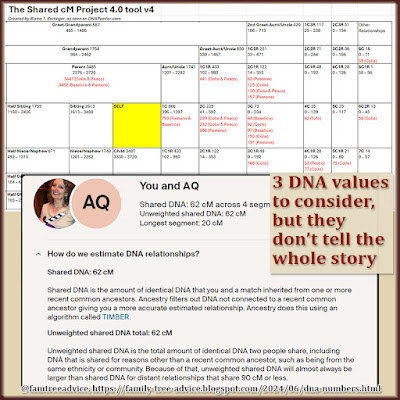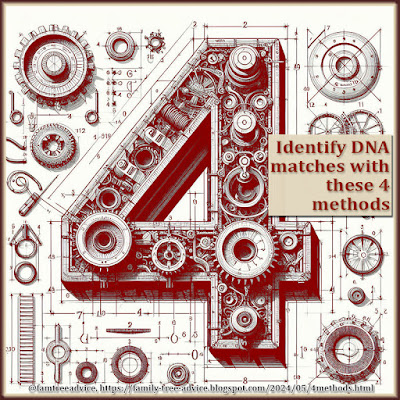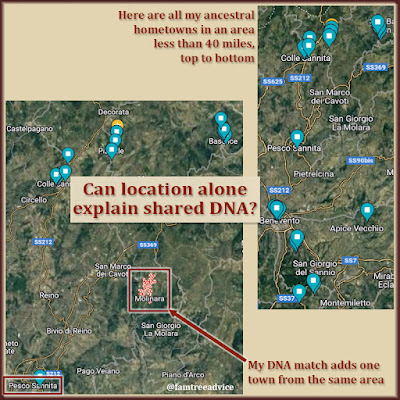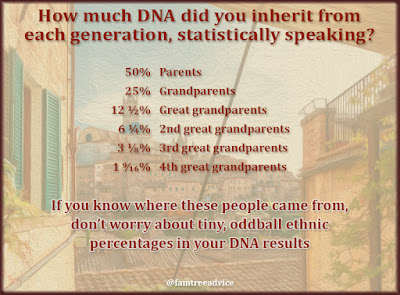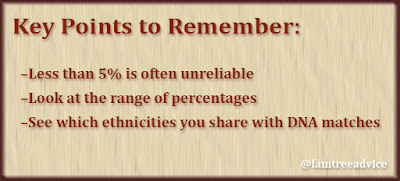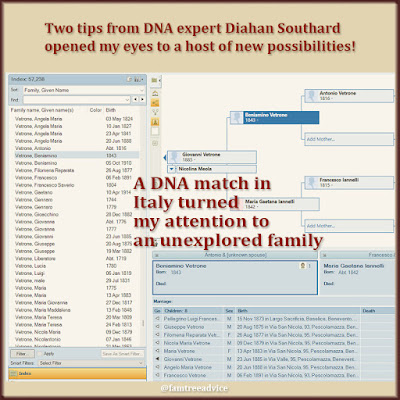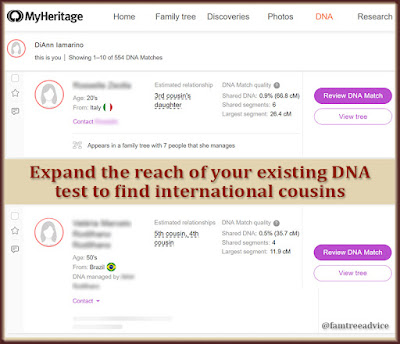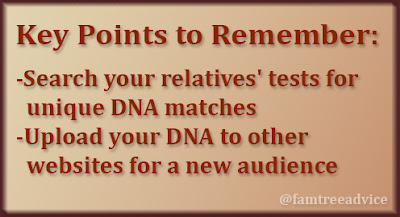 |
| Here's how the new features of Ancestry Pro Tools stack up. Are they worth the price? |
When I heard you can sign up for Ancestry Pro Tools for one month and then quit, I knew I had to try out their new features. My main interest is to see how my DNA matches match to one another. This can help you understand which of matches share a common ancestor with each other. That can help you see where they fit in your family tree.
The other Pro Tools give you desktop-like tools for your online-only family tree.
What's Included in Pro Tools?
- Charts & Reports. Family Tree Maker (FTM) provides the same reports as Pro Tools. I'm sure other family tree software programs do, too. A computer-based family tree program is better than building your tree online in so many ways.
- Tree Mapper. This feature has a cool visual representation and several types of filters. But I can do this in the Places tab of FTM. Or you can get really fancy and use this free program.
- Smart Filters. If you use MyTreeTags™ on Ancestry, this is a nice way to see everyone with a particular tag. But I don't use the tags. I didn't see any filters that offer me something I'd like to do but can't do in FTM.
- Tree Checker. This tool's main finding about my tree is that tons of people have no documentation. Yeah, tell me about it! I've been creating source citations for weeks. It also thinks I have 7,040 possible duplicates. I don't. We've all seen towns where everyone has the same name. As I scroll through this list of people, it's plain to see they all have different birth dates. This feature isn't helping me. It can also find many types of errors, and that may seem like a big help. But we already have Family Tree Analyzer to do that for us.
- Tree Insights. These factoids are not something I can generate within FTM, but I've used Family Tree Analyzer to do so. I can't say it's useful. This tool is showing me:
- the top 5 surnames in my tree
- the 5 longest-living people in my tree (they're only that old because I can't find out when they died)
- the 5 couples with the most children
- the 5 youngest brides or grooms
- Fan Chart Settings. I like the look of the Fan Chart in Ancestry much more than the one in FTM. But the Pro Tools add-ons to the existing Ancestry Fan Chart don't do anything very useful:
- You can choose the number of generations to display (4, 5, 6, or 7). I have more generations than that.
- You can show Family Lines, which gives a different color to each of your 4 grandparents' ancestors. I think the non-Pro version does that.
- If you choose the Hints setting, it uses varying shades of green to show you who has a lot of hints and who has few or none. The Photos setting and Sources setting does the same thing. A range of colors show you the haves and have-nots.
For me, none of those tools are worth a recurring cost. That brings me back to the reason I jumped on a $7 sale for one month of Ancestry Pro Tools: Enhanced Shared Matches.
For years I've wanted to know why my parents share some DNA with one another. I had to see what Enhanced Shared Matches could do for me. (Note: Each of my parents took an AncestryDNA test, and I manage their kits.)
After a long and frustrating day of comparing Mom and Dad's DNA matches, I came up empty. My problem is the family's IBS segments—that's Identical By State. All my ancestors came from the same small geographical area. These small bits of shared DNA are more from the land itself than blood relationships.
My parents' shared DNA matches need to be my focus. As I worked through them, I hit so many with dead ends in their tree that I couldn't resolve. Do those dead ends hold the magic key?
I don't want to lose the extra insights from Enhanced Shared Matches, but I don't want to pay for it again. What to do? Make a new spreadsheet, of course!
Step 1. Document their Shared Matches
Looking at Dad's shared matches with Mom, I find a list of 21 people, but I'll exclude myself and make it 20 people.
I'll start a new spreadsheet with Dad in column A and Mom in column C. In column B, I'll enter the name of each shared match. I can also add what I know about them, if I've figured out their relationship to me.
 |
| Capture and analyze the insights of Enhanced Shared Matches in a spreadsheet while you can. |
In each cell of the spreadsheet:
- I'll list the number of shared cMs and Ancestry's predicted relationship.
- I'll note which side of Dad and Mom's families they're on: Maternal, Paternal, Both Sides, or Unassigned. I have to view Mom and Dad's match lists separately for this.
The first big surprise is that I see a lot more shared matches when I view Mom's DNA test. What the heck? I started with Dad's match list because he has more matches than Mom or me. Nine shared matches from Dad's list are not in Mom's list at all.
It makes sense that this is a built-in 20 cM cut off. The 9 people in Dad's list only have fewer than 20 cMs shared with him. The 30 or so people in Mom's list only have fewer than 20 cMs shared with her. I should concentrate on the 11 shared matches with whom both Mom and Dad share 20 or more cMs. The low-cM shared matches must be Identical By State.
These people with the smaller amounts of shared DNA escaped me in the past. I don't know if the Enhanced Shared Matches Pro Tool is the reason I'm seeing them now.
Step 2. Document Highest Shared Matches of the Top 11 People
In the same Excel workbook, I'll document the shared matches of my parents' top 11 shared matches. I'll view Dad and Mom's tests one at a time and note who each person shares with them. I'll add the number of cMs, predicted relationships, and side of family as before. To increase my chances of success, I'll add only the strongest shared matches of the 11 people. They have to share 139 cMs or more. (I chose that number after consulting the Shared centiMorgan Project.) That way, these matches should be no more distant to my subject people than 4th cousins. Plus, I'll skip any matches if they share less than 20 cM with my parents.
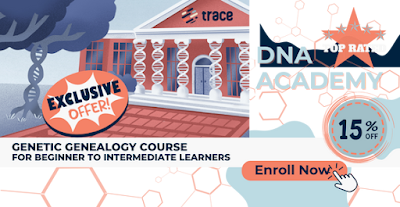 |
| A 15% discount for readers of Fortify Your Family Tree! |
My goal is to find the best common connections. After documenting the first person's shared matches, I found something interesting. He's a close match to another one of the 11 top matches. Now I have 2 people from the same family who match both my parents. Is this the break I needed?
In the end, I'm left with 5 people who share DNA with both my parents and have close matches in the original list. I've already fit 2 of them into my family tree, and I find no connection to Mom's family. Plus, the one who shares 116 cM with Dad is actually more distant than expected. He's Dad's 4th cousin on one side and 5th cousin on the other.
While my parents' shared matches are tantalizing, every clue is pointing toward their being Identical By State. The most amazing thing is how their IBS families came together in a one-block stretch of Morris Avenue in the Bronx, New York.
Before I finish this month of Ancestry Pro Tools, I'm going to keep going through my DNA matches to learn what I can using the enhanced tools. It's a huge help when you can see that this match is the mother of that match. But I don't plan to renew my Pro Tools subscription.

